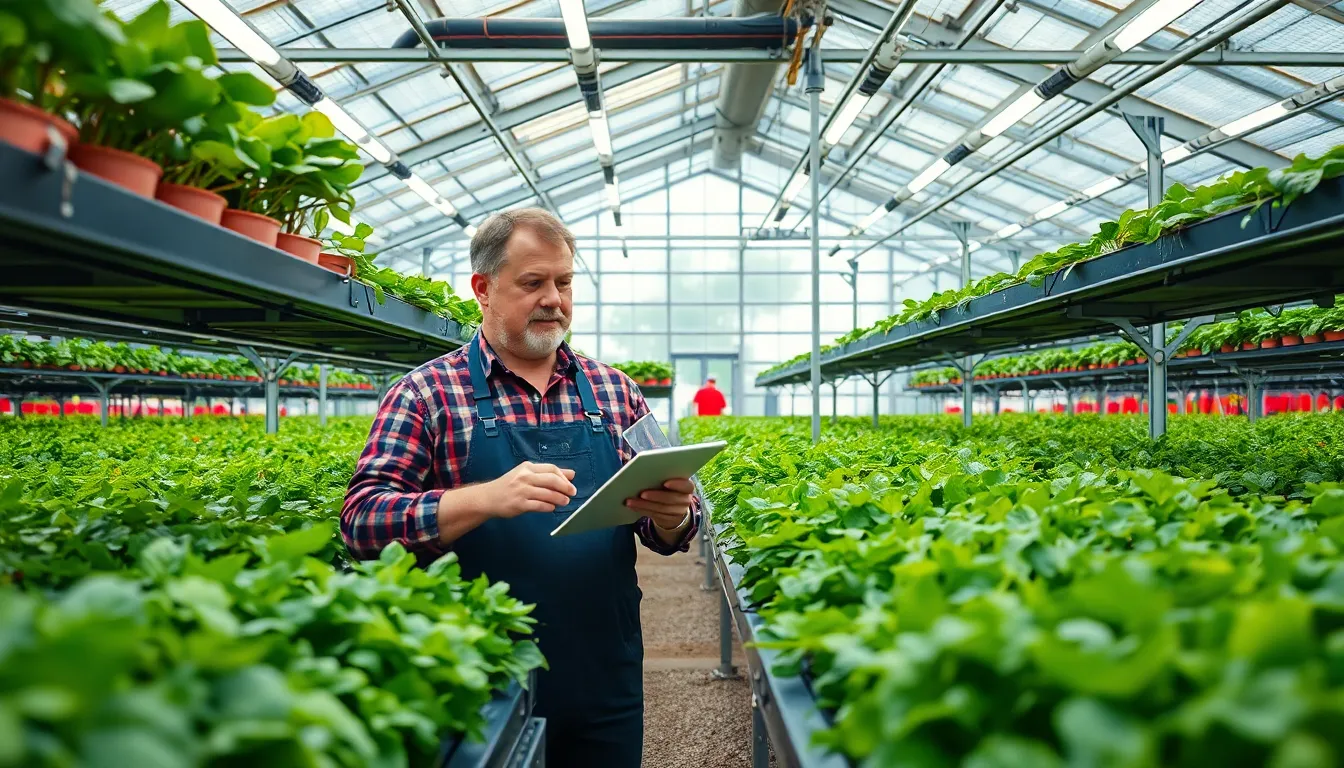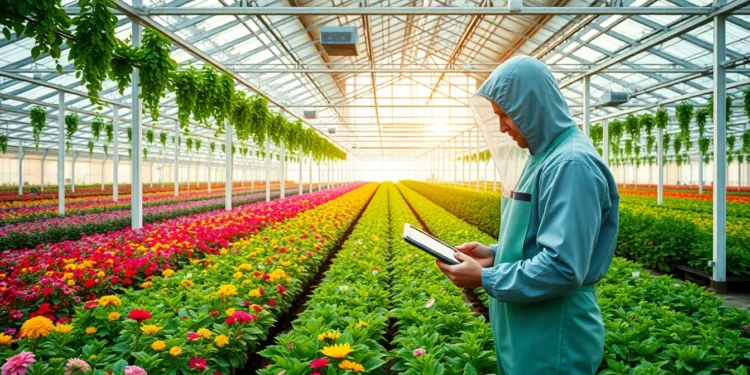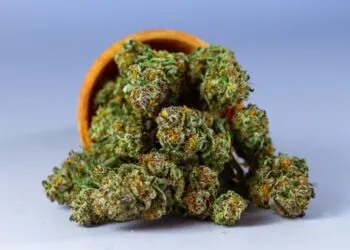When you think of Dutch agriculture, you might picture endless fields of tulips or rows of cheese wheels. But behind this picturesque scene lies a high-tech powerhouse that keeps the country’s farms thriving. The Netherlands may be small, but its agricultural output ranks among the world’s top, and that’s no accident. Technology is the secret sauce making it happen.
From precision farming to climate-controlled greenhouses, Dutch agriculture relies on cutting-edge innovations to overcome limited land and unpredictable weather. Without these tech marvels, the nation’s ability to feed millions and export billions in produce would be seriously compromised. It’s a perfect storm where tradition meets technology, and the results are nothing short of impressive.
The Role of Technology in Dutch Agriculture
Technology stands as the backbone of Dutch agriculture, enabling high productivity despite limited land resources. This approach lets the Netherlands maximize output while managing environmental challenges efficiently.
Historical Development of Agricultural Technology in the Netherlands
Agricultural technology in the Netherlands evolved through centuries of adapting to geographic constraints. Early innovations included land reclamation techniques that transformed marshes into fertile fields. Mechanization accelerated in the 20th century, introducing tractor use and automated irrigation systems. Post World War II periods focused on greenhouse technology, developing controlled environments to extend growing seasons. The country’s historical focus on water management also shaped cutting-edge drainage and fertilization methods. These foundations support today’s advanced, technology-driven agriculture that merges sustainability with productivity.
Key Technological Innovations Used Today
Precision farming leads Dutch agriculture by applying GPS and sensor data to optimize planting, fertilizing, and harvesting. Climate-controlled greenhouses use technology to regulate temperature, humidity, and light, allowing year-round crop production. Robotics automate tasks like planting seedlings and harvesting fruits, reducing labor demands and increasing accuracy. Data analytics guide crop choices and predict yields, enhancing decision-making processes. Dutch farmers also deploy vertical farming and aquaponics to conserve space and water. Combining these innovations drives efficiency in production and resource management.
Factors Driving the Dependence on Technology in Dutch Agriculture

Dutch agriculture relies heavily on technology due to unique national constraints and progressive goals. Understanding these factors clarifies why innovation remains central to its success.
Limited Land Area and High Population Density
The Netherlands has roughly 41,543 square kilometers of land, ranking among the most densely populated countries globally, with over 500 people per square kilometer. This density restricts available farmland, leaving just 2.4 million hectares for agricultural use. Efficient use of this constrained space requires technologies like vertical farming and precision agriculture to boost yields without expanding land. Small plot sizes force farmers to adopt high-tech solutions to maximize production on every acre. These technologies optimize planting, irrigation, and harvesting, compensating for limited acreage and ensuring competitive output on the global stage.
The Need for Sustainable and Efficient Farming Practices
Sustainability serves as a top priority because environmental impact regulations tighten continually in the Netherlands. Water management, fertilizer use, and energy consumption undergo strict oversight, pushing farmers to adopt cutting-edge methods like precision nutrient delivery and renewable energy integration. Such methods minimize waste and emissions, improving resource efficiency while maintaining crop health. Additionally, high market demand for eco-friendly produce increases pressure to implement sustainable practices. Adopting technology enables farms to reduce their ecological footprint and achieve sustainable annual growth targets simultaneously.
Climate Challenges and Environmental Regulations
Variable weather patterns and limited arable land expose Dutch agriculture to significant climate risks. Rising temperatures, erratic rainfall, and increased pest prevalence demand adaptive technologies such as smart greenhouses and automated monitoring systems. The government enforces stringent environmental regulations emphasizing water conservation and emission reduction, requiring farms to meet precise standards. These pressures accelerate the integration of climate-resilient technologies to safeguard productivity. Only through real-time data analytics and controlled environment agriculture can farmers meet environmental goals and sustain reliable output despite climate uncertainties.
Advanced Technologies Transforming Dutch Farming
Dutch agriculture relies extensively on advanced technologies that enhance productivity, optimize resource use, and ensure sustainability. These innovations address challenges of limited land and environmental constraints while maintaining high output levels.
Precision Agriculture and Data Analytics
Precision agriculture significantly improves yield efficiency in the Netherlands by enabling targeted resource application. Farmers utilize GPS and sensor data to monitor soil conditions, moisture, and nutrient levels precisely. This approach reduces waste and enhances crop health, directly impacting sustainability. Data analytics further support decision-making by processing vast information collected from fields to predict pest outbreaks and optimize planting schedules. It integrates climate data to adapt practices according to weather variations, ensuring stable production despite unpredictable conditions. Continuous monitoring and real-time feedback allow rapid adjustments, maximizing returns on investment.
Use of Greenhouse and Controlled Environment Agriculture
Greenhouses dominate Dutch farming, creating controlled environments that extend growing seasons and enhance crop quality. These structures regulate temperature, humidity, and light, enabling year-round production independent of external weather. Climate control systems reduce water use by recycling moisture and enable precise nutrient delivery through hydroponics and aeroponics. Vertical stacking within greenhouses maximizes space in a country where arable land limits expansion. Innovations in energy-efficient LED lighting and CO2 enrichment further boost plant growth. Consequently, controlled environment agriculture reduces the ecological footprint of farming while increasing export volumes and domestic supply.
Automation and Robotics in Farming Operations
Automation transforms labor-intensive tasks within Dutch farming through robotics equipped with sensors and AI technology. Machines perform planting, harvesting, and sorting with high accuracy and speed, lowering operational costs and minimizing human error. Automated irrigation systems deliver water precisely based on plant needs, conserving resources. Robots also carry out pest control by detecting affected plants early and applying treatments locally, reducing chemical use. Data-driven machines operate continuously in greenhouses and fields, supporting yields rigorously. This technology meets the demand for efficient production despite workforce shortages and rising labor expenses.
Economic and Global Implications
Dutch agriculture depends heavily on technology to sustain its role in the global food supply and economy. Technological advancements allow the Netherlands to overcome spatial and environmental constraints while maintaining economic vitality.
Contribution to Export and Food Security
The Netherlands ranks as the second largest agricultural exporter globally, with exports exceeding €95 billion annually. High-tech farming methods enable the production of large quantities of fruits, vegetables, flowers, and dairy on limited land. This output supports global food security by supplying consistent, year-round produce to over 150 countries. Precision agriculture increases yield efficiency, reducing waste and resource use while ensuring stable food production. The country’s technological edge in agriculture positions it as a reliable global food source despite its compact land area.
Maintaining Competitiveness in the Global Market
Dutch farmers use cutting-edge technology to keep their products competitive in price and quality. Automated greenhouses and data-driven irrigation reduce costs and optimize crop growth. Robotics streamline labor, allowing fast adaptation to market demands. Advanced supply chain management software ensures timely delivery and freshness, which strengthens international market presence. Continuous innovation in sustainable practices meets stricter environmental regulations and builds consumer trust. Leveraging technology, the Netherlands secures its place among leading agricultural exporters amidst rapidly evolving global markets.
Conclusion
Dutch agriculture’s reliance on technology is essential for sustaining its remarkable productivity and global influence. Advanced innovations not only optimize limited resources but also ensure environmental responsibility and economic viability.
As challenges like land scarcity and climate variability intensify, technology remains the cornerstone that enables Dutch farmers to adapt and thrive. This ongoing commitment to innovation secures the Netherlands’ position as a leader in efficient and sustainable agriculture worldwide.












